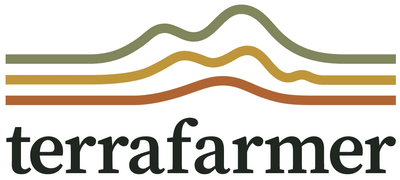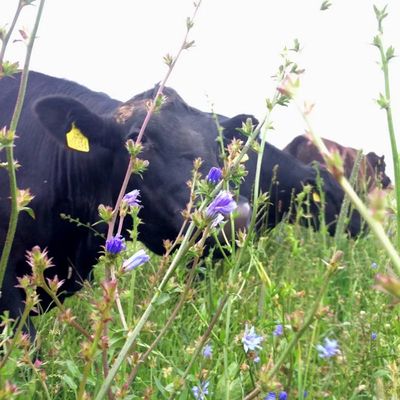


Herbal Leys
Interest in diverse herbal leys has increased dramatically in recent years in light of their benefits for soil health, reducing inputs and tolerance to drought. A herbal ley is a diverse sward of different grasses, legumes and herb species, with varying rooting depths, properties, and drought tolerances. Herbal leys are a central aspect of many modern regenerative farming strategies, with a positive and rapid impact on soil health, structure, drainage, and ecology. They usually include nitrogen-fixing legumes, which are high in protein and tannins, and offer huge potential for carbon sequestration, as well as reducing reliance on fertilisers. Herbal leys also provide an important food source and habitat for formal biodiversity, including insects, birds and mammals.
With a mixture of plants of different rooting depths, herbal leys also provide a rich mineral source for livestock, with 60% more calcium than a ryegrass mix, for example, as well as other essential trace elements like copper and selenium, while high tannin levels in some mixes can provide a natural anthelmintic effect, reducing worm burdens over time.
Modern herbal ley mixes usually include grasses like perennial ryegrass, cocksfoot, timothy, tall and meadow fescue, with 30% legumes, such as various clovers, sainfoin, trefoils, and lucerne, as well as deep-rooting herbs like plantain, chicory, yarrow, burnet, sheep’s parsley and more.
However, choosing the right mix to suit your soil type—and what you want to achieve—is essential. There is no point in wasting precious time and diesel sowing a fancy-sounding 30+ species mix when many of the plants will never even establish on your land or are simply not suitable for your farming system.
As livestock naturally select the most palatable plants, it is also important to adopt an appropriate grazing/cutting strategy, with sufficient resting to allow recovery to avoid overgrazing or the loss of particular plants.
- Choosing the right mix to suit your soil type and what you want to achieve
- Correct establishment approach, including undersowing cereals in rotation
- Adopting appropriate grazing strategies throughout the season
- Maintaining and improving sward diversity over time
- Assessing and monitoring improvements to soil health, soil carbon content and more
